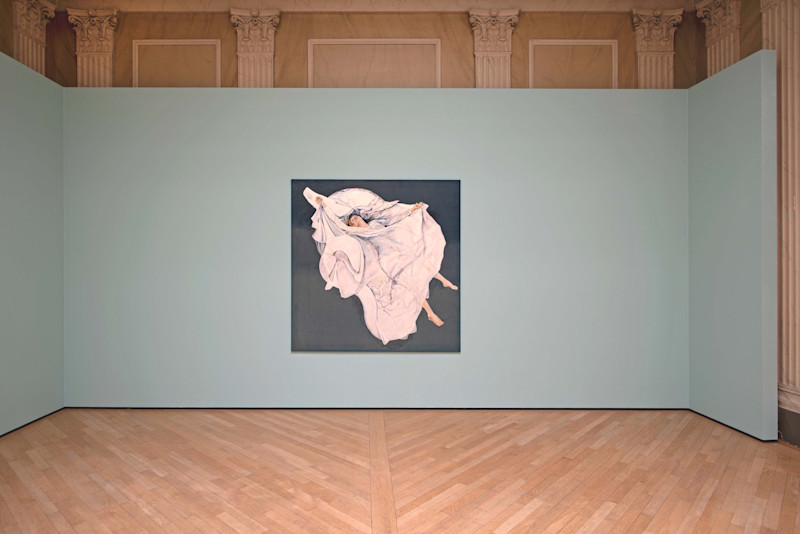Charlotte Gyllenhammar
November 28, 2021
- Paulina Sokolow

Charlotte Gyllenhammar, The Spectator 1, 2003, Edition 3 + 1 AP, Bronze, 48 x 52 x 47 cm
The great monetary value of bronze makes it quite natural for it to be so predominantly used for important symbols. It is obvious from the very moment humankind mastered the use of bronze that its nature was thought to lend itself to being used for symbols of power, wisdom, piety, strength, virtue, or national unity. However, while bronze persists in its role as a bearer of meaning, our ideals are subject to change and, with that, our understanding of the things the symbols represent. An artist who is doing incredible work to establish a universal, new language of symbolism for the 21st century is Charlotte Gyllenhammar. A monument to Dag Hammarskjöld was recently unveiled, and what could possibly be more relevant in our time than having a man form the shadow of a child? This child, rather than simply appealing to our protective instincts, reminds us of our own origins, of the fact that we were once children ourselves, and that we are a mere journey away from those days.
Gyllenhammar was also commissioned to make a memorial monument for Raoul Wallenberg in Gothenburg, which was unveiled by former UN General Secretary Kofi Annan. The first time a larger audience experienced her use of powerful symbols was back in 1999, when she suspended a dead tree, hanging upside-down, over the main shopping street in downtown Stockholm. People from another time and place would probably have responded with confusion, but a contemporary audience is more likely to make silent associations to uprootedness and alienation.
In The Spectator, the shape of the body reveals that we are once again dealing with a child, albeit one who appears to be wearing some kind of space suit. Anybody who has been a parent in a country as cold as Sweden knows all about the cumbersome clothing we make our children put on before we let them out to play in the snow. The sitting child in its bulky overalls is sheltered by adult care. We want so badly to shield them from the evils of the world, and tough beaver nylon certainly feels like it might be able to keep evil at bay. But the older the child grows, the more it will begin to protest against having to wear uncomfortable clothes, and any other well-meaning impositions we might make for the child’s own good. Basically, we have to learn to set them free.
Charlotte Gyllenhammar is represented in many major Scandinavian, European, and North American collections, including those of Moderna Museet, Stockholm, the National Museum of Women in the Arts, Washington, D.C., and Kiasma, Helsinki. Her works are also permanently installed at the Wanås Konst sculpture park. She has had several solo exhibitions in recent years, including at the Gothenburg Museum of Art and at Fotografiska in Stockholm.
Gallery


Charlotte Gyllenhammar


Charlotte Gyllenhammar, The Spectator 1, 2003, Edition 3 + 1 AP, Bronze, 48 x 52 x 47 cm
Charlotte Gyllenhammar, The Spectator 1, 2003, Edition 3 + 1 AP, Bronze, 48 x 52 x 47 cm



